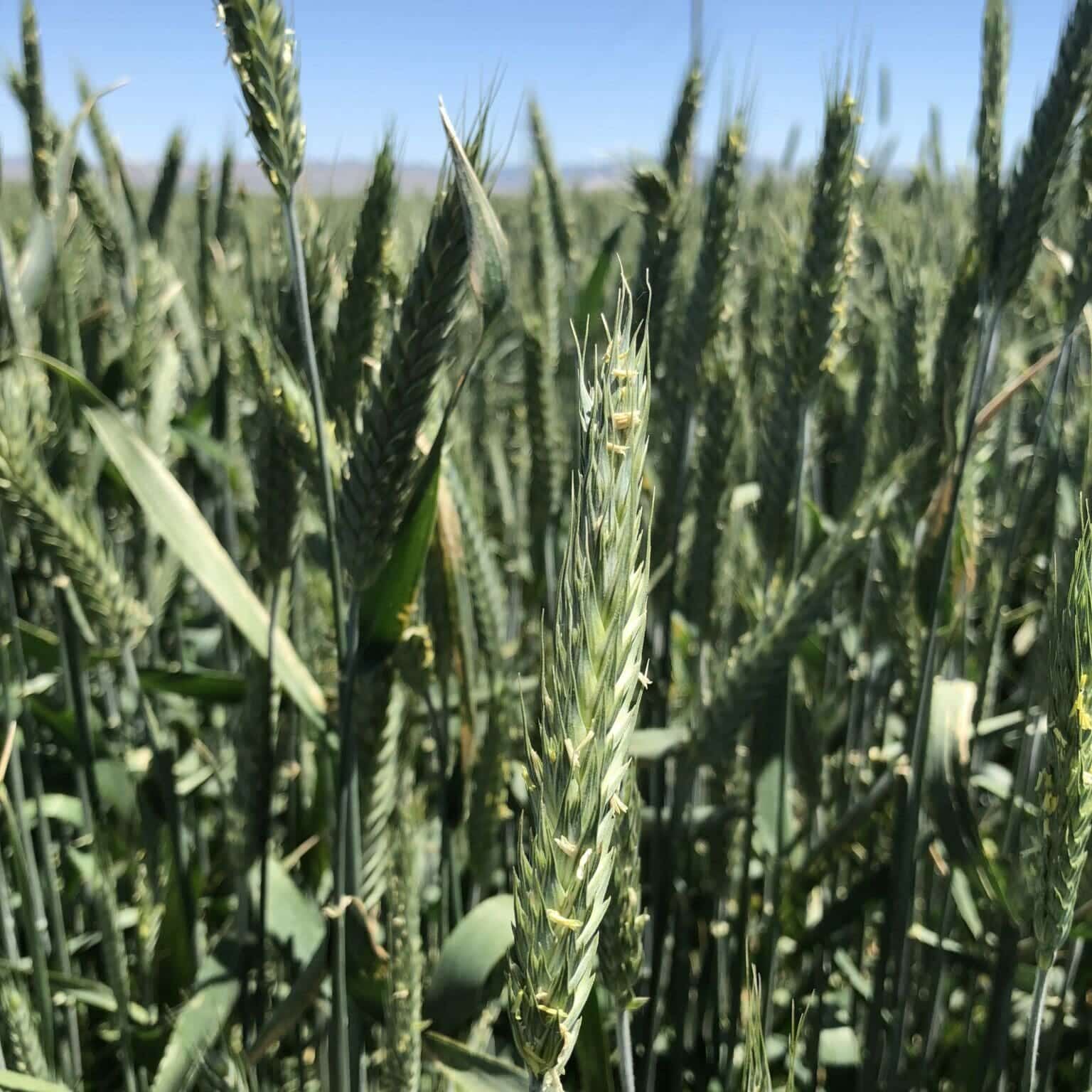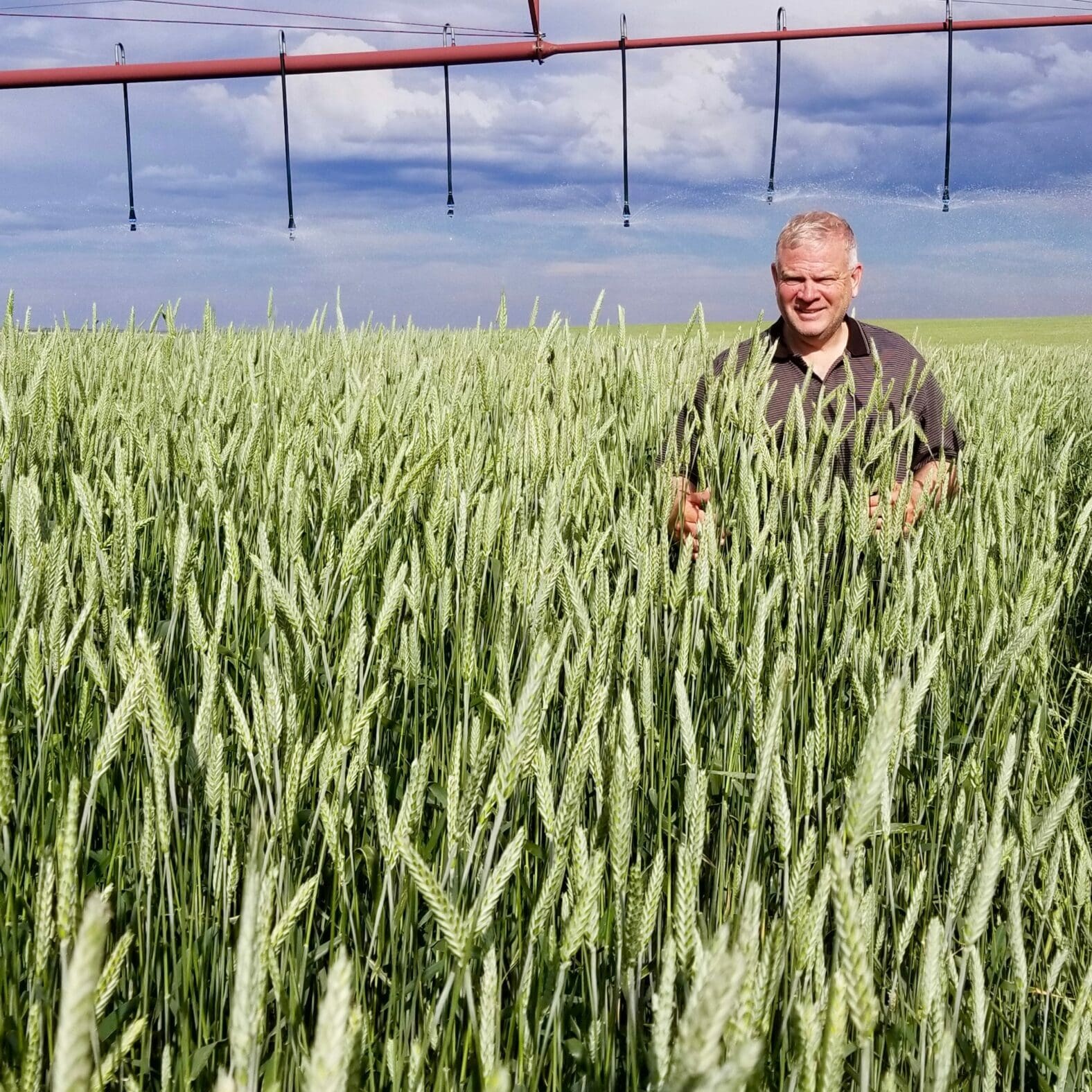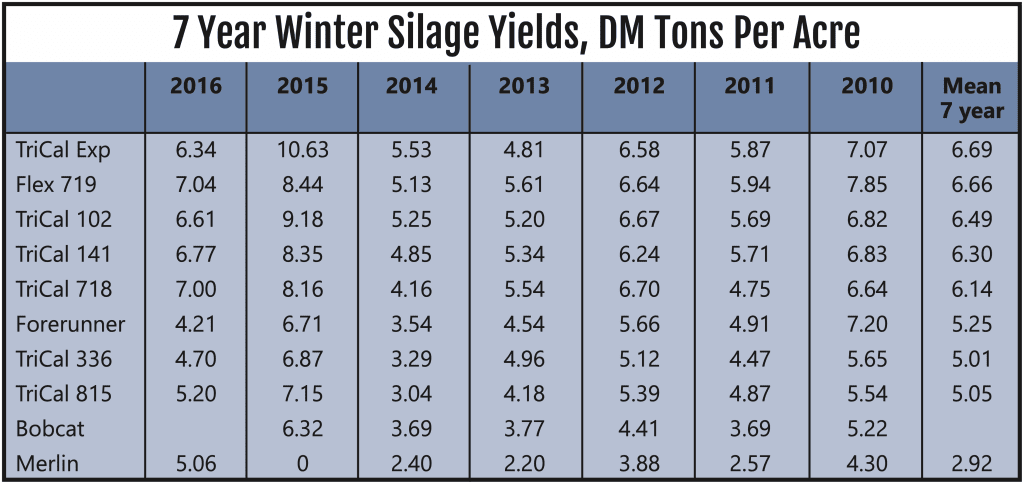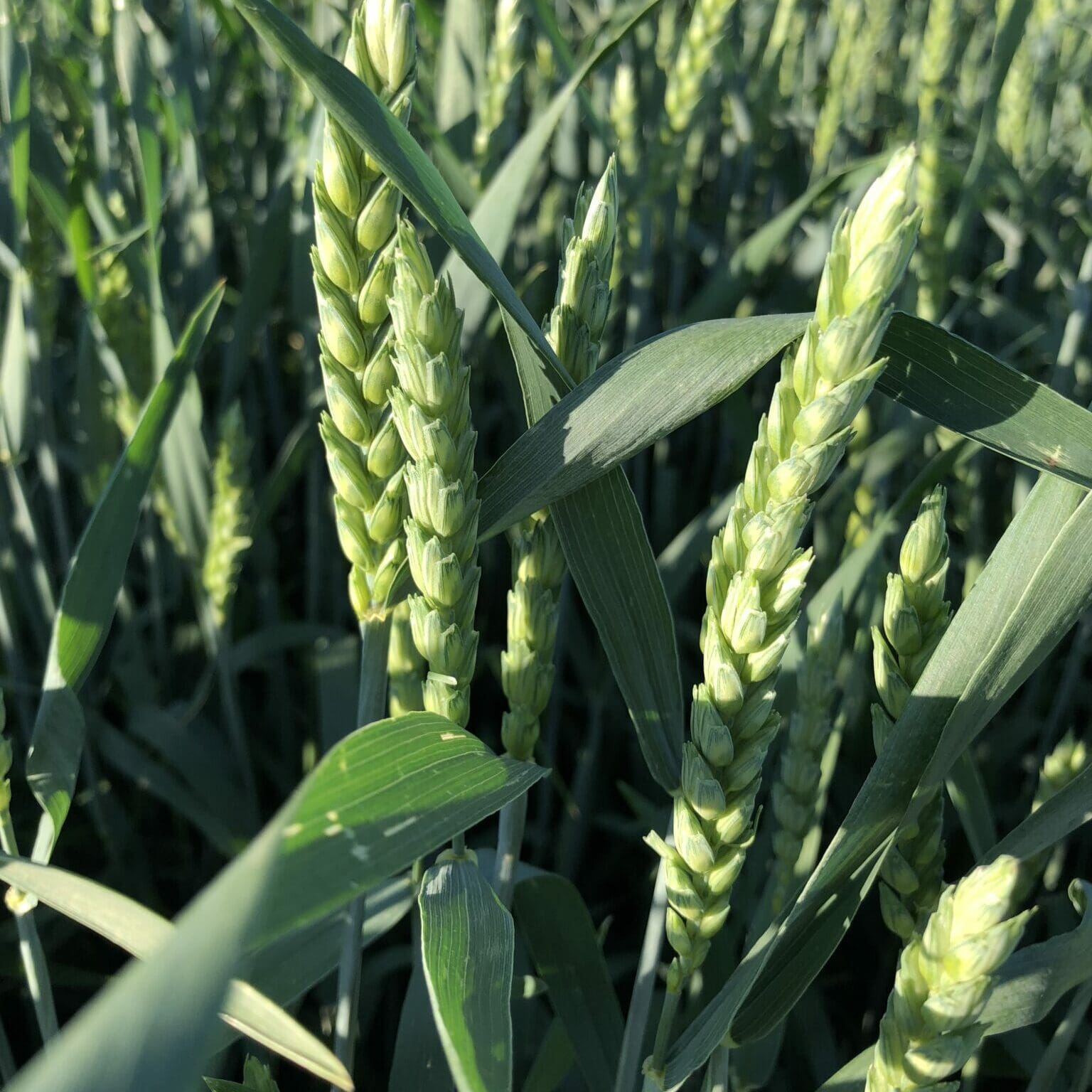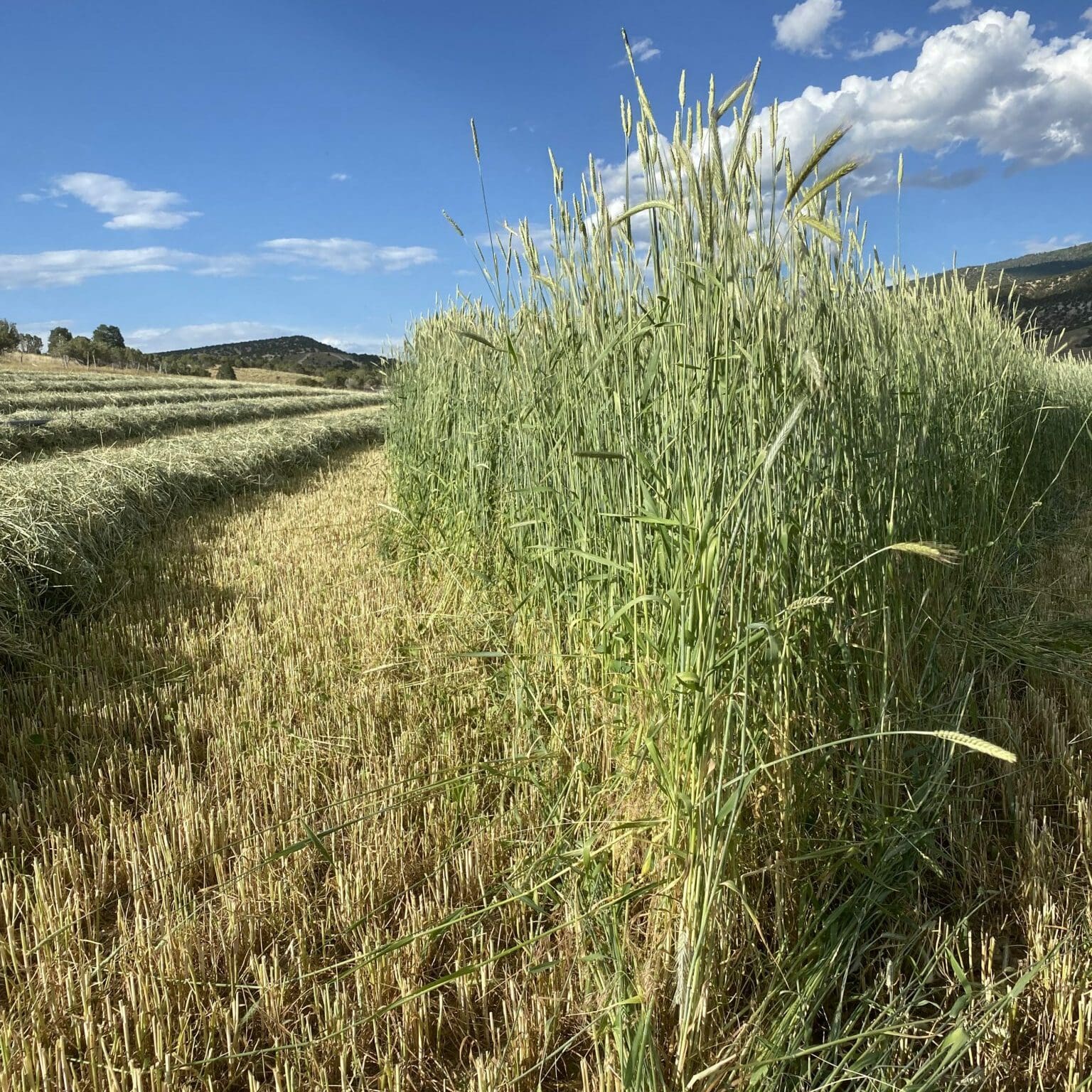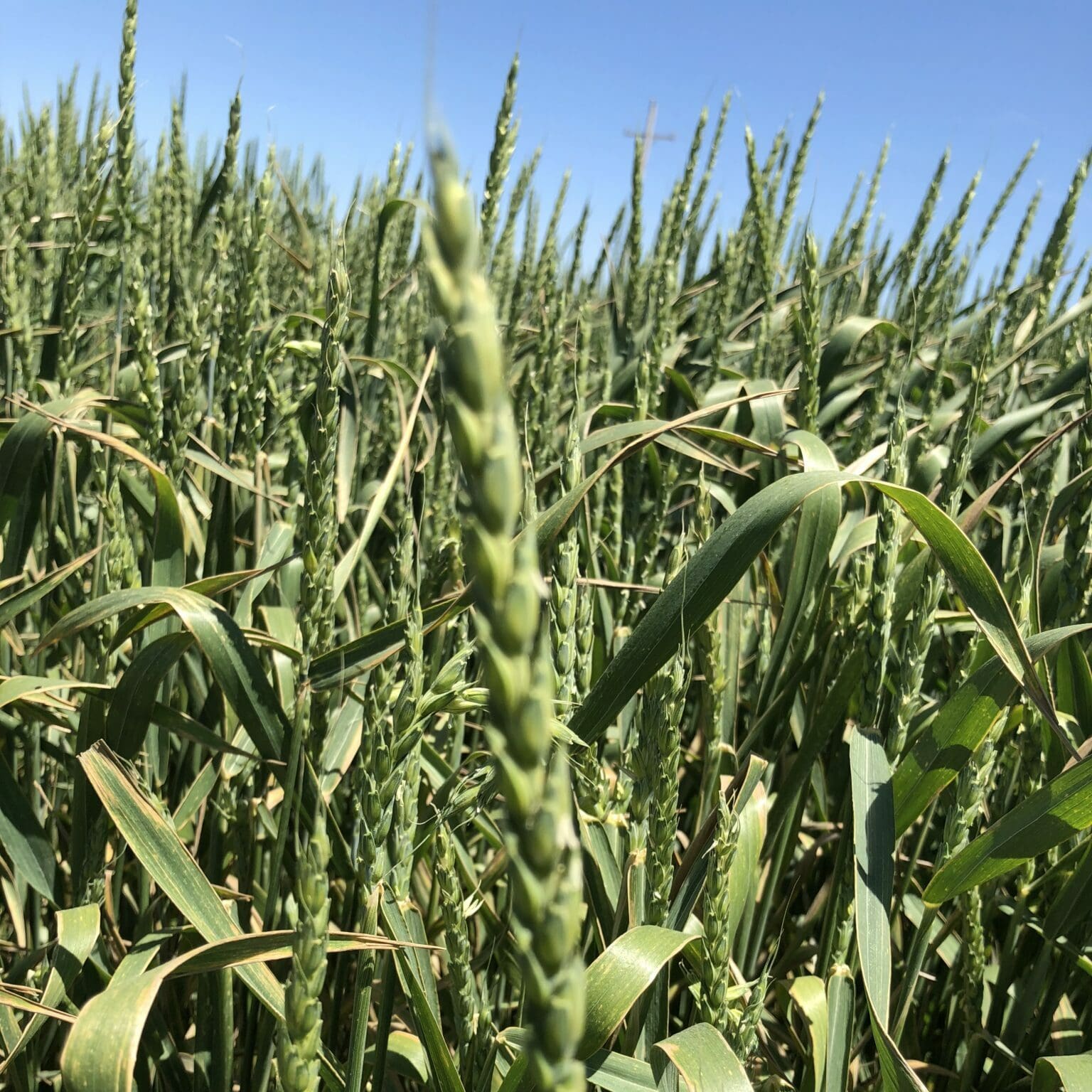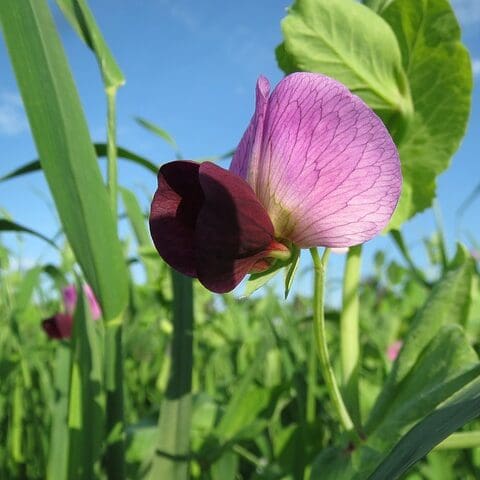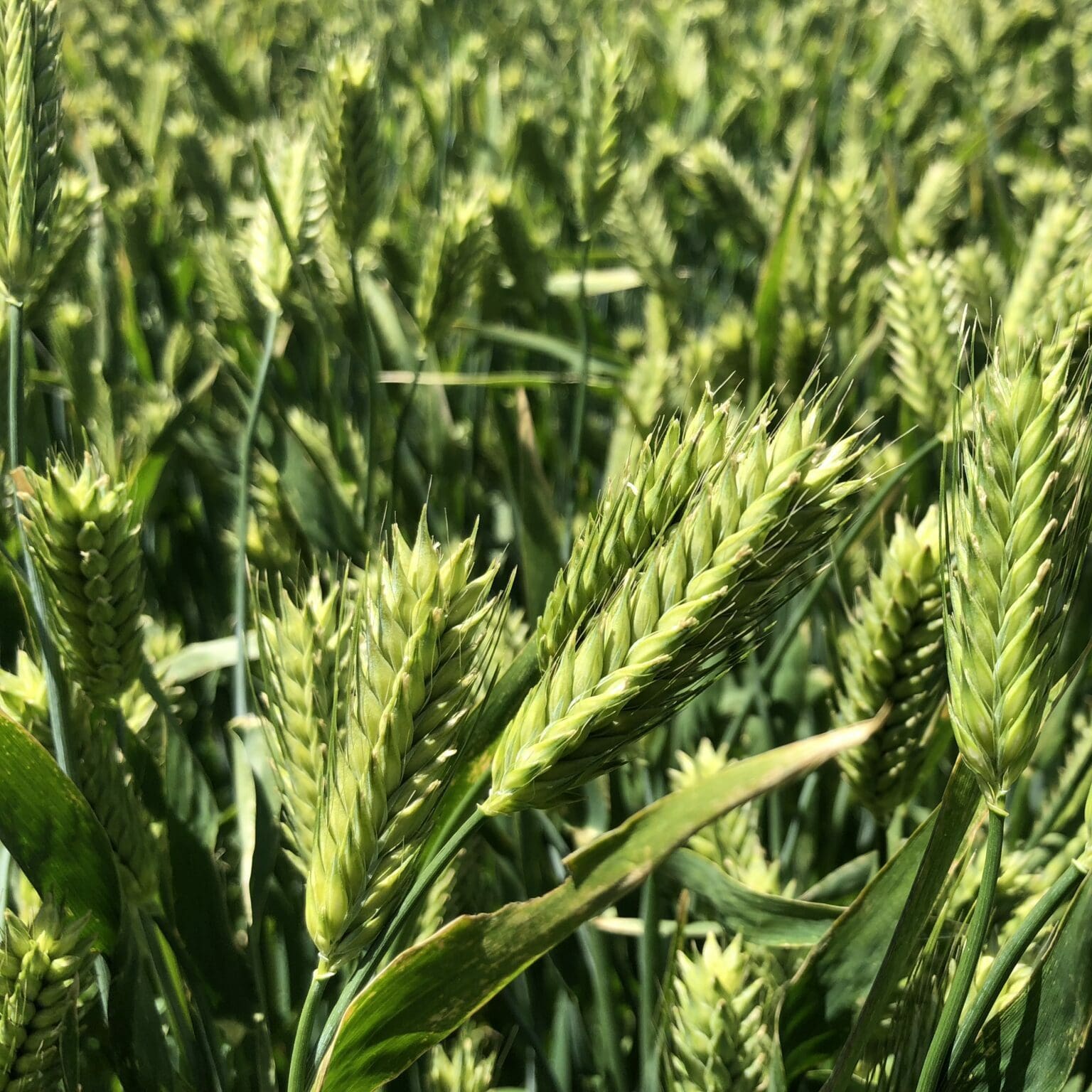Grain harvest is in full swing!
Fall or “winter” small grains are in our silos and are being processed and cleaned for farmers all across the Western USA. Our Fall Forage Mixtures are on the warehouse floor!
How to Order
Fall Grains are sold by the CWT (“hundred-weight”) and are not available for purchase through the online store. They are generally sold by the pallet, LTL (less-than-truckload) or in full semi loads. We ship our grains all across the west, so if you have an interest in them please give us a call and we can help you find the right product and arrange the best delivery method.
We have the items listed below in-stock and ready for shipment:
- Forerunner Triticale
- FX 1001 Triticale
- Flex 719 Triticale
- Brundage Winter Wheat
- Ray Winter Wheat
- Willow Creek Winter Wheat
- Fall Forage Blend
- Rye Grain
- Austrian Winter Peas
- Baldwin Barley
- Sunstar Pride Barley
Forerunner Triticale
Forerunner triticale is a facultative growth habit triticale. It can be grown in the spring or the fall. Winter growth is semi-prostrate, dark green and mid-cold. hardy. It is considered “awnletted”, meaning it expresses a short “dwarf” beard.
Forerunner is tall, stiff, and exhibits mid-season maturity with a smooth to sparsely pubescent neck.
Forerunner Triticale is an excellent choice for silage, hay or cover crop. Forerunner should be cut and ensiled at “boot” or heading stage for maximum nutritional value. Forerunner is an “awnletted” variety. Forerunner can grow to average heights of 50-60 inches for forage purposes. Straw strength is good. The crop stands well with higher rates of nutrients. Stems are soft and palatable to livestock. The leaves on Forerunner are broad and long, providing a good leaf/stem ratio.
Forerunner triticale has found great favor in the Intermountain West and is one of our best-sellers. It is an excellent choice as a stand-alone item or as a component in a forage mix.
Recommended seeding rate 100-125 lbs per acre.
FX 1001 Fall Triticale
FX 1001 is a “nearly beardless” or “nearly awnletted” high yielding fall triticale. In development and test plots, 9,700 plants (97%) out of 10,000 were completely beardless. The remaining heads (3%) expressed a short spikelets of dwarf beard. The dramatically reduced awn expression makes this variety very desirable for forage. It has excellent forage yield potential, and winter triticale produces very high tonnage on dryland acres. This variety is a game changer for forage production across the US.
Description:
FX 1001, a nearly awnless (9,700 plants out of 10,000 are completely awnless) winter triticale bred for forage production. This variety is taller and matures earlier than other winter cereal forage standards. In addition, FX 1001 is typically three centimeters taller and three days earlier to head than other triticale, and twenty centimeters taller and heads an average of ten days earlier than Willow Creek winter wheat. Moreover, the variety was screened for winter hardiness and consistently produces forage and seed yields comparable to or exceeding Trical® 102 in dryland and irrigated trials in Montana, North Dakota, and Wyoming.
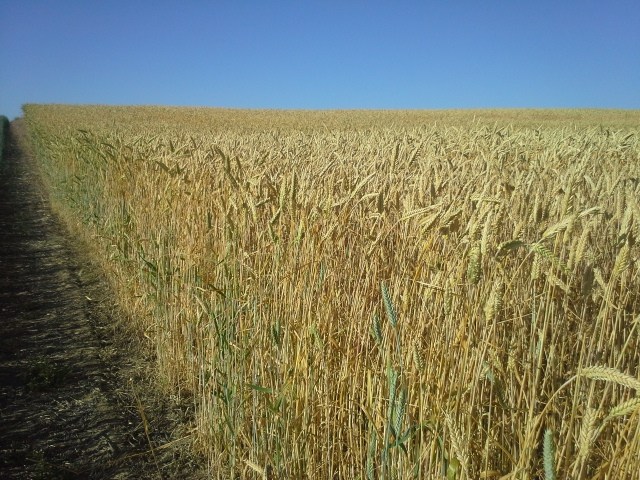
Benefits of fall FX 1001 triticale:
- Nearly Awnless: 97% of plants are completely awnless
- Reduce incidences of lump-jaw, sore eyes, and other similar concerns in livestock feeding situations
- High Yielding: Consistently high forage yields in a variety of irrigated and dryland trials
- Cold Hardy: Bred to perform in the harsh northern climates of Montana, North Dakota, Wyoming and the intermountain west.
Establishment
Plant 1/2″ -1 1/2″ depth.
Plant into well prepared seed bed for best germination success.
Flex 719 Triticale
TriCal Flex 719 triticale is a very popular variety because of its range in geography. It is adapted from the Texas pan handle through Canada. It is facultative and is fall planted across the northern US or spring and fall planted in CA and the southern U.S.
Flex 719 is awnletted (dwarf beard expression), very winter hardy, stands very well and has excellent forage quality and tonnage.
Compare Flex 719 to Forerunner and FX 1001 triticale.
Brundage Wheat
A soft white winter wheat released in 1996 by Idaho AES. Dryland and irrigated yield potential of Brundage is excellent, as is the end use quality.
Brundage is a soft white common winter wheat with excellent straw strength that is adapted to intermediate to high rainfall dryland areas of the Pacific Northwest. It also performs well in irrigated regions. It has moderate winter hardiness.
Brundage is susceptible to several diseases. Fungicides may need to be applied even in dryland conditions.
Ray Winter Wheat
Ray is a hard red winter wheat developed by the Montana Agricultural Experiment Station and available in fall of 2018. Ray is a late maturing, tall, awnless line developed for forage production.
Compared to Willow Creek wheat, Ray has similar forage yield and forage quality but superior seed yield. Compared to conventional bread wheats; Ray has average to above average yield; below average test weight; and average protein count. Ray is resistant to stripe rust and susceptible to stem rust. Ray has low PPO and average milling/baking characteristics. Average plant height: 35 inches
Willow Creek Winter Wheat
Willow Creek winter wheat is an improved hard red forage variety with many desirable forage features. It grows tall, matures later than other winter wheats, and expresses a fine stemmed morphology. Willow Creek produces abundant forage under dryland and irrigated conditions. It has good winter hardiness, is beardless, and is highly palatable to cattle. Willow Creek is frequently fall planted to provide a nutritious pasture source the following spring. This also allows for delayed turnout onto native or slower growing perennial pastures.
Willow Creek is extremely winter hardy. If planted early in the fall it can provide fall grazing, early spring grazing, and one or more high-tonnage summer cuttings. Under irrigation, regrowth can provide multiple cuttings or additional pasture. Compared to haybet barley, Willow Creek produces higher tonnage and a wider flag leaf. Forage quality is somewhat lower than for forage barleys but beneficially, nitrates are also significantly lower.
Fall Forage Mixture
Our fall forage mixture of Beardless Barley, Beardless Wheat and Triticale. Patterned after our traditional Prosper 3-Grain Forage Blend, Fall varieties are “fall” and/or “winter” varieties intended for fall and winter sowing.
Rye Grain
Cereal rye is one of the most versatile and commonly used cover crops in the country. If you are looking for a winter hardy cereal crop with fast spring growth, than cereal rye is your perfect cover crop. Rye is known for its late fall to early spring nutrient scavenging and grazing potential. It has been successfully used for erosion control in some areas.
Other Names: winter rye, grain rye
Rye Type: cool season annual cereal grain
Main Roles: scavenge excess nitrates, prevent erosion, add organic matter, suppress weeds
Great mixed with: legumes, grasses or other cereal grains
Cereal Rye is taller and quicker-growing than wheat. It can serve as a windbreak and trap snow or hold rainfall over winter. It sows readily into many high-value and agronomic crops and resumes growth quickly in spring, allowing timely killing by rolling, mowing or herbicides. Many like to pair rye with a winter annual legume such as hairy vetch.
Austrian Winter Peas
Winter peas, or “field peas”, are an excellent source for good fall ground cover and weed suppression that also provides high quality forage that can be hayed or grazed. They are an excellent companion crop when planted with small grain crops. Winter peas can fix as much as 75-100 # N/acre. They prefer cool moist soil conditions and do not perform well in hot dry conditions. This annual legume are low growing, viny, and have 2 to 4 foot long, thin, hollow, stems and purple or reddish-pink flowers. As their name would suggest, winter peas have great winter hardiness and can be successfully grown in the grain belt states of the Midwest, the Mid-Atlantic states, and the Great Plains and inter-mountain regions of the west.
Planting Instructions:
50 lbs/acre drilled
70 lbs/acrebroadcast
25-30 lbs/acre drilled
35-40 lbs/acre broadcast
Innocullant: 1/2 to 1 inch: If broadcast, the soil should be tilled lightly to cover the seed.
Ideal Soil: Prefers well-drained soils within a pH range of 6.3-7.0
Baldwin Awnless Barley
- Baldwin barley was developed at the Utah Agricultural Experiment Station and released in 2014. Plant Variety Protection was sought in 2012 and later issued as PV 201200469.
- Baldwin is a tall, six-rowed, winter habit awnless barley that must be planted by mid-October to maintain the awnless character. The entire plant is harvested for animal forage and has an excellent nutrition profile.
- This barley has two harvests, the earlier harvest is for protein and the later is for more carbohydrates.
- When planted as forage, it is usually mixed with an awnless wheat and an awnless triticale (wheat/rye cross).
Commercial Applications
- Fall planted
- Must be irrigated
- Forage feed
- Intermountain region of U.S.
Competitive Advantages
- Awnless, making it easier for animals to eat
- The forage has a high nutrition content when compared with wheat and triticale
Direct Link: http://utahstate.technologypublisher.com/technology/20627
Sunstar Pride Barley
Sunstar Pride is a six-rowed winter feed barley. It was released by Sunderman Breeding Co. in 1997. It was selected from the cross Eight Twelve/Steptoe. Its experimental designation was SDM 204 B-1. It has intermediate height and good straw strength. At the time of evaluation it was moderately resistant to BYD and susceptible to stripe rust. It was evaluated as Entry 952 in the UC Regional Cereal Testing program from 1996-1998 for fall planting in the intermountain region of northern California.
For more information, or to place an order, please give us a call at 435.283.1411
